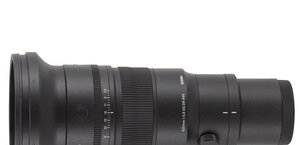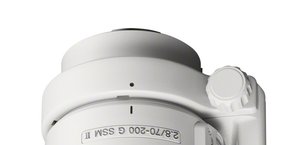Tamron 18-400 mm f/3.5-6.3 Di II VC HLD
8. Vignetting
| Nikon D7000, 18 mm, f/3.5 | Nikon D7000, 18 mm, f/5.6 |

|

|
| Nikon D7000, 50 mm, f/4.5 | NIkon D7000, 50 mm, f/5.6 |

|

|
| Nikon D7000, 100 mm, f/5.3 | Nikon D7000, 100 mm, f/8.0 |

|

|
| Nikon D7000, 200 mm, f/6.0 | Nikon D7000, 200 mm, f/8.0 |

|

|
| Nikon D7000, 400 mm, f/6.3 | Nikon D7000, 400 mm, f/8.0 |

|

|
At the combination of 18 mm and f/3.5 aperture the lens loses as much as 39% (−1.44 EV) of light in the frame corners. The Sigma 18-300 mm lost 33% of light and the Nikkors 18-300 mm 35% and 41% respectively. All lenses mentioned above seem to represent a similar level although once again it must be said the Tamron’s task was the most difficult as its focal range is the widest.
Please Support UsIf you enjoy our reviews and articles, and you want us to continue our work please, support our website by donating through PayPal. The funds are going to be used for paying our editorial team, renting servers, and equipping our testing studio; only that way we will be able to continue providing you interesting content for free. |
- - - - - - - - - - - - - - - - - - - - - - - - - - - - - - - - - - - - - - - - - - - - - - - -
If you stop down the tested lens to f/4.0 the vignetting decreases to 35% (−1.26 EV). By f/5.6 it drops to 23% (−0.74 EV), and by f/8.0 to 15% (−0.48 EV). Further stopping down doesn’t have any measurable influence on this aberration.
The vignetting problems end at 50 mm where, at the maximum relative aperture, it amounts to just 11% (−0.35 EV), dropping to 8% (−0.23 EV) on stopping down the aperture to f/5.6.
Very similar results you observe at 100 mm. In that case the vignetting by f/5.3 and f/5.6 is, respectively, 13% (−0.41 EV) and 12% (−0.38 EV). By f/8.0 it decreases to a value of 5% (−0.15 EV).
At 200 mm and f/6.0 relative aperture the brightness loss in the frame corners is 16% (−0.50 EV); it decreases to an imperceptible value of 8% (−0.24 EV) on stopping down the aperture to f/8.0.
After passing to the 400 mm focal lengths the results in this category become just slightly different. By f/6.3 the vignetting is 17 % (−0.55 EV), and by f/8.0 it amounts to just 9% (−0.26 EV).
| Nikon D7000, 18 mm, f/3.5 |
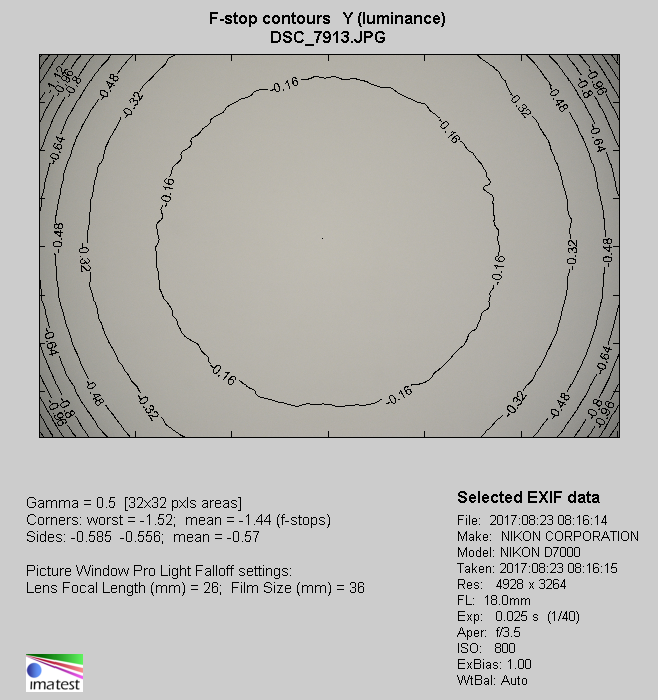 |
| Nikon D7000, 50 mm, f/4.5 |
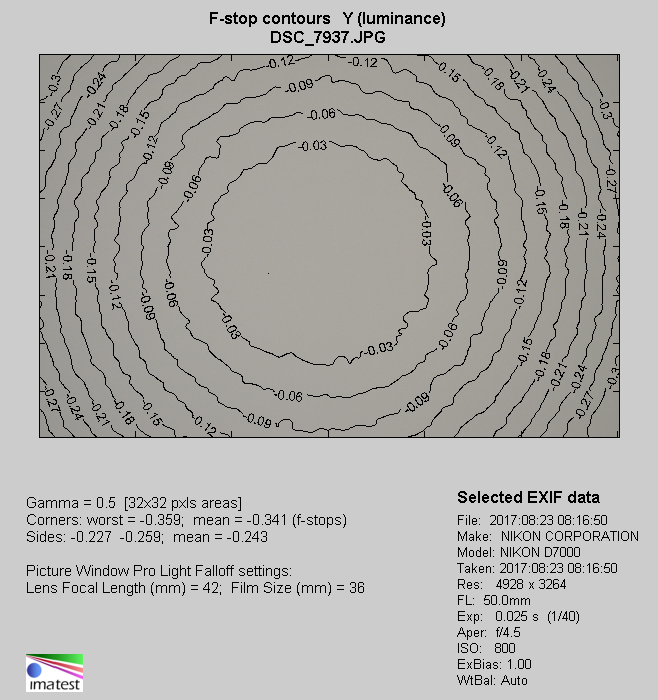 |
| Nikon D7000, 100 mm, f/5.3 |
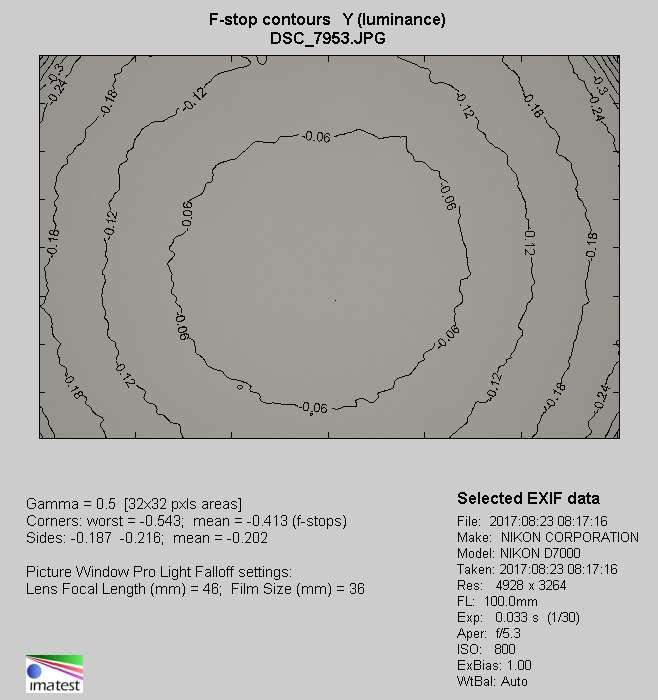 |
| Nikon D7000, 200 mm, f/6.0 |
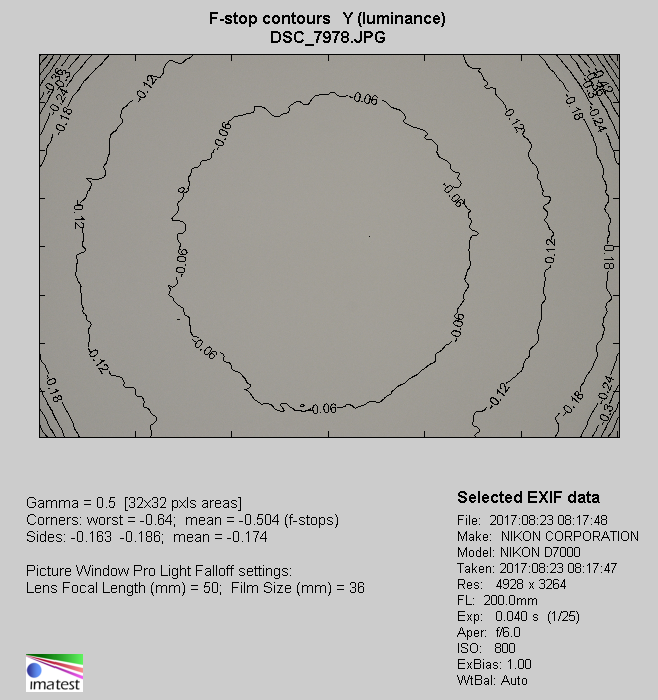 |
| Nikon D7000, 400 mm, f/6.3 |
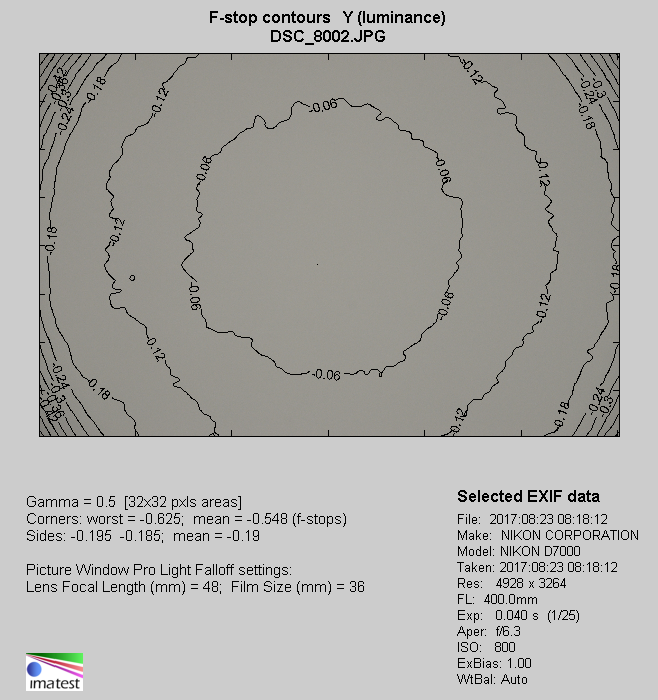 |




